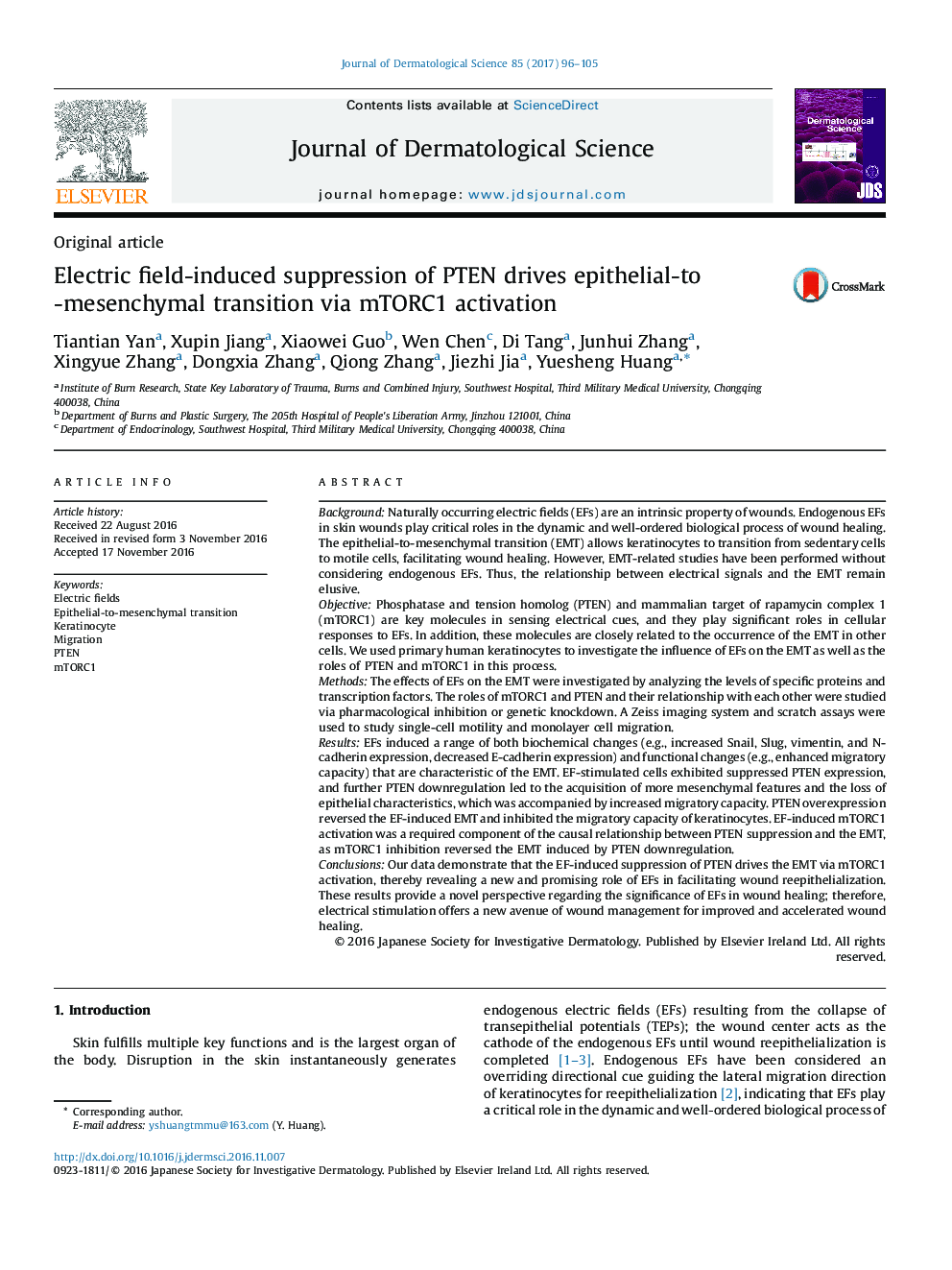| کد مقاله | کد نشریه | سال انتشار | مقاله انگلیسی | نسخه تمام متن |
|---|---|---|---|---|
| 5649051 | 1407113 | 2017 | 10 صفحه PDF | دانلود رایگان |

- We demonstrate that EFs can induce the EMT in keratinocytes for the first time, providing novel perspectives of the significance of EFs in wound healing.
- EF-induced suppression of PTEN drives the EMT acquisition.
- mTORC1 is required for EF-induced EMT and enhanced migratory capacity.
- mTORC1 is involved in the EMT driven by PTEN suppression.
BackgroundNaturally occurring electric fields (EFs) are an intrinsic property of wounds. Endogenous EFs in skin wounds play critical roles in the dynamic and well-ordered biological process of wound healing. The epithelial-to-mesenchymal transition (EMT) allows keratinocytes to transition from sedentary cells to motile cells, facilitating wound healing. However, EMT-related studies have been performed without considering endogenous EFs. Thus, the relationship between electrical signals and the EMT remain elusive.ObjectivePhosphatase and tension homolog (PTEN) and mammalian target of rapamycin complex 1 (mTORC1) are key molecules in sensing electrical cues, and they play significant roles in cellular responses to EFs. In addition, these molecules are closely related to the occurrence of the EMT in other cells. We used primary human keratinocytes to investigate the influence of EFs on the EMT as well as the roles of PTEN and mTORC1 in this process.MethodsThe effects of EFs on the EMT were investigated by analyzing the levels of specific proteins and transcription factors. The roles of mTORC1 and PTEN and their relationship with each other were studied via pharmacological inhibition or genetic knockdown. A Zeiss imaging system and scratch assays were used to study single-cell motility and monolayer cell migration.ResultsEFs induced a range of both biochemical changes (e.g., increased Snail, Slug, vimentin, and N-cadherin expression, decreased E-cadherin expression) and functional changes (e.g., enhanced migratory capacity) that are characteristic of the EMT. EF-stimulated cells exhibited suppressed PTEN expression, and further PTEN downregulation led to the acquisition of more mesenchymal features and the loss of epithelial characteristics, which was accompanied by increased migratory capacity. PTEN overexpression reversed the EF-induced EMT and inhibited the migratory capacity of keratinocytes. EF-induced mTORC1 activation was a required component of the causal relationship between PTEN suppression and the EMT, as mTORC1 inhibition reversed the EMT induced by PTEN downregulation.ConclusionsOur data demonstrate that the EF-induced suppression of PTEN drives the EMT via mTORC1 activation, thereby revealing a new and promising role of EFs in facilitating wound reepithelialization. These results provide a novel perspective regarding the significance of EFs in wound healing; therefore, electrical stimulation offers a new avenue of wound management for improved and accelerated wound healing.
Journal: Journal of Dermatological Science - Volume 85, Issue 2, February 2017, Pages 96-105